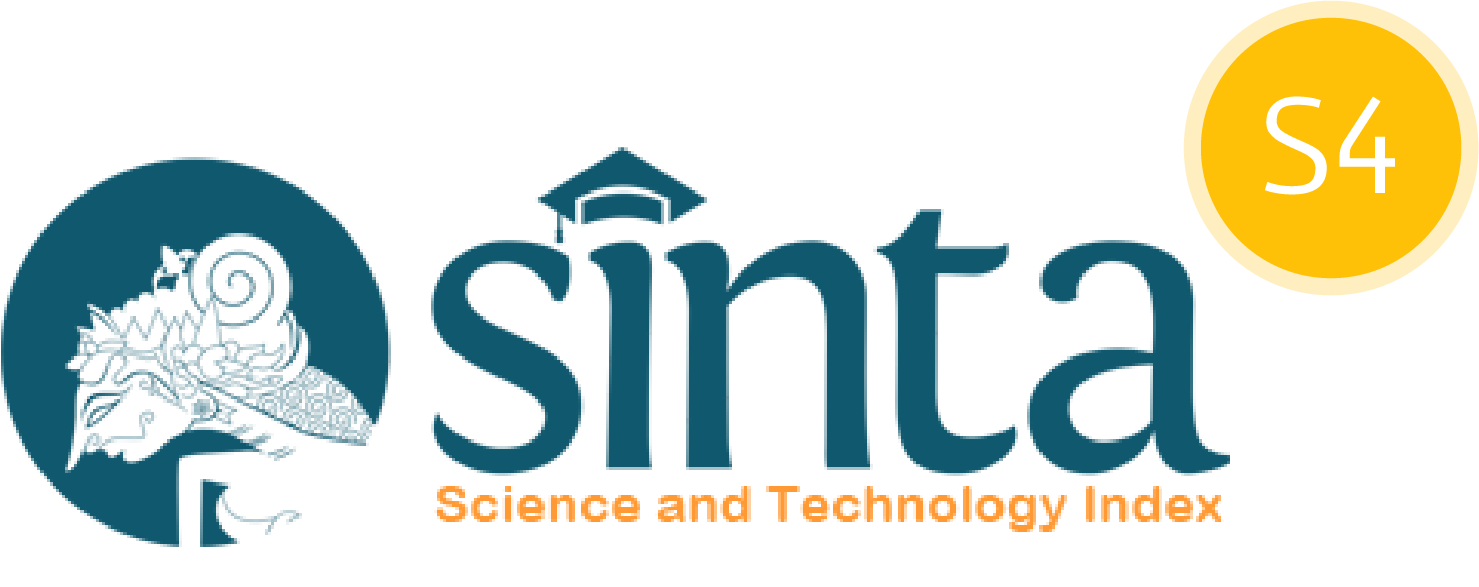Rekomendasi Pemilihan Jenis Tanaman Menggunakan Algoritma Random Forest dan XGBoost Regressor
DOI:
https://doi.org/10.31294/coscience.v4i2.2987Keywords:
Machine Learning, Random Forest, Crop Recommendation, XGBoostAbstract
Recommendations for plants that suit a particular planting location's environmental conditions and soil nutrients can lead to optimal harvest outcomes. Machine learning applications in agriculture have been widely explored, particularly in enhancing crop yields. In this study, two machine learning algorithms, Random Forest and XGBoost Regressor, were implemented to recommend plants based on environmental conditions and soil nutrient levels. The implementation of both algorithms was compared in terms of accuracy using three accuracy metrics: Mean Absolute Error (MAE), Mean Square Error (MSE), and R2. The results indicated that both algorithms exhibited comparable accuracy levels. The Random Forest algorithm demonstrated superior accuracy in terms of MAE and MSE, with values of 36.73681574 and 1.848396760, respectively. Meanwhile, the XGBoost Regressor algorithm displayed good accuracy, mainly when measured using the R2 accuracy metric, achieving a high accuracy level of 0.98542963509705..
Keywords : Crop Recommendation, Machine Learning, Random Forest, XGBoost
References
Banerjee, G., Sarkar, U., & Ghosh, I. (2021). A Fuzzy Logic-Based Crop Recommendation System (D. Bhattacharjee, D. K. Kole, N. Dey, S. Basu, & D. Plewczynski (ed.); hal. 57–69). Springer Singapore. https://doi.org/10.1007/978-981-15-7834-2_6
Chicco, D., Warrens, M. J., & Jurman, G. (2021). The coefficient of determination R-squared is more informative than SMAPE, MAE, MAPE, MSE and RMSE in regression analysis evaluation. PeerJ Computer Science, 7, 1–24. https://doi.org/10.7717/PEERJ-CS.623
Craker, L. E. (2021). 4 Plant Growth Factors That Affect All Plants. Journal of Soil Science & Plant Health, 5(3).
Filippi, P., Jones, E. J., Wimalathunge, N. S., Somarathna, P. D. S. N., Pozza, L. E., Ugbaje, S. U., Jephcott, T. G., Paterson, S. E., Whelan, B. M., & Bishop, T. F. A. (2019). An approach to forecast grain crop yield using multi-layered, multi-farm data sets and machine learning. Precision Agriculture, 20(5), 1015–1029. https://doi.org/10.1007/s11119-018-09628-4
Johansen, K., Morton, M. J. L., Malbeteau, Y., Aragon, B., Al-Mashharawi, S., Ziliani, M. G., Angel, Y., Fiene, G., Negrão, S., Mousa, M. A. A., Tester, M. A., & McCabe, M. F. (2020). Predicting Biomass and Yield in a Tomato Phenotyping Experiment Using UAV Imagery and Random Forest. Frontiers in Artificial Intelligence, 3(May). https://doi.org/10.3389/frai.2020.00028
Li, Y., Zeng, H., Zhang, M., Wu, B., Zhao, Y., Yao, X., Cheng, T., Qin, X., & Wu, F. (2023). A county-level soybean yield prediction framework coupled with XGBoost and multidimensional feature engineering. International Journal of Applied Earth Observation and Geoinformation, 118, 103269. https://doi.org/https://doi.org/10.1016/j.jag.2023.103269
Marques Ramos, A. P., Prado Osco, L., Elis Garcia Furuya, D., Nunes Gonçalves, W., Cordeiro Santana, D., Pereira Ribeiro Teodoro, L., Antonio da Silva Junior, C., Fernando Capristo-Silva, G., Li, J., Henrique Rojo Baio, F., Marcato Junior, J., Eduardo Teodoro, P., & Pistori, H. (2020). A random forest ranking approach to predict yield in maize with uav-based vegetation spectral indices. Computers and Electronics in Agriculture, 178, 105791. https://doi.org/https://doi.org/10.1016/j.compag.2020.105791
Meshram, V., Patil, K., Meshram, V., Hanchate, D., & Ramkteke, S. D. (2021). Machine learning in agriculture domain: A state-of-art survey. Artificial Intelligence in the Life Sciences, 1, 100010. https://doi.org/https://doi.org/10.1016/j.ailsci.2021.100010
Murugan, A., Nair, S. A. H., & Kumar, K. P. S. (2019). Detection of Skin Cancer Using SVM, Random Forest and kNN Classifiers. Journal of Medical Systems, 43(8), 269. https://doi.org/10.1007/s10916-019-1400-8
Pande, S M, Ramesh, P. K., Anmol, A., Aishwarya, B. R., Rohoilla, K., & Shaurya, K. (2021). Crop Recommender System Using Machine Learning Approach. 2021 5th International Conference on Computing Methodologies and Communication (ICCMC), 1066–1071. https://doi.org/10.1109/ICCMC51019.2021.9418351
Pande, Shilpa Mangesh, Ramesh, P. K., Anmol, A., Aishwarya, B. R., Rohilla, K., & Shaurya, K. (2021). Crop Recommender System Using Machine Learning Approach. Proceedings - 5th International Conference on Computing Methodologies and Communication, ICCMC 2021, Iccmc, 1066–1071. https://doi.org/10.1109/ICCMC51019.2021.9418351
Ravi, R., & Baranidharan, B. (2020). Crop Yield Prediction using XG Boost Algorithm. International Journal of Recent Technology and Engineering (IJRTE), 8(5), 3516–3520. https://doi.org/10.35940/ijrte.d9547.018520
Sharma, A., Jain, A., Gupta, P., & Chowdary, V. (2021). Machine Learning Applications for Precision Agriculture: A Comprehensive Review. IEEE Access, 9, 4843–4873. https://doi.org/10.1109/ACCESS.2020.3048415
Singh, R. (2023). Crop recommendation data (V1 ed.). Harvard Dataverse. https://doi.org/doi:10.7910/DVN/4GBWFV
Supriya, B. N., & Akki, C. B. (2021). Sentiment prediction using enhanced xgboost and tailored random forest. International Journal of Computing and Digital Systems, 10(1), 191–199. https://doi.org/10.12785/ijcds/100119
Upadhyay, H., Juneja, A., Turabieh, H., Malik, S., Gupta, A., Bitsue, Z. K., & Upadhyay, C. (2022). Exploration of Crucial Factors Involved in Plants Development Using the Fuzzy AHP Method. Mathematical Problems in Engineering, 2022. https://doi.org/10.1155/2022/4279694
Wang, Y., Zhu, D., & Ding, Y. (2023). Identification of Winter Wheat- Identification of Winter Wheat-Growing Areas Based on the XGBoost Algorithm. Preprints. https://doi.org/10.20944/preprints202303.0346.v1
Xu, Q., & Yin, J. (2021). Application of Random Forest Algorithm in Physical Education. Scientific Programming, 2021, 1996904. https://doi.org/10.1155/2021/1996904
Xu, X., Gao, P., Zhu, X., Guo, W., Ding, J., Li, C., Zhu, M., & Wu, X. (2019). Design of an integrated climatic assessment indicator (ICAI) for wheat production: A case study in Jiangsu Province, China. Ecological Indicators, 101, 943–953. https://doi.org/https://doi.org/10.1016/j.ecolind.2019.01.059
Downloads
Published
Issue
Section
License
Copyright (c) 2024 The Author(s)

This work is licensed under a Creative Commons Attribution-ShareAlike 4.0 International License.


















